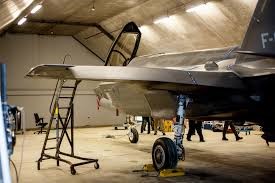We present part 2 of a major report on the vulnerability of American forces to attacks by China.
Chairman John Moolenaar and.Senator Marco Rubio stated that in order to complement active defenses and strengthen our bases, we must invest in “passive defenses,” like hardened aircraft shelters and underground bunkers, dispersal of forces across both within a base and across multiple bases, redundant logistical facilities, and rapid runway repair capabilities.
They note that Robust passive defenses can help minimize the damage of missile attacks by increasing our forces’ ability to withstand strikes, recover quickly, and effectively continue operations.
The U.S. Air Force has commendably incorporated many of the core tenets of passive defense into its doctrine of “Agile Combat Employment” (ACE). The concept emphasizes increasing survivability of forces through dispersal of teams to operate in a “hub-and-spoke” manner. 8 Concepts such as ACE should be expanded upon and prioritized to harden bases against the Chinese threat, as Secretary Kendall has stated.9 Yet, as explained below, it is apparent that the Pentagon is not urgently pursuing needed passive defenses. Hardened Aircraft Shelters Ongoing research by Thomas Shugart and Timothy A. Walton, analysts associated with the Center for a New American Security and Hudson Institute, respectively, paints a troubling picture of U.S. efforts to strengthen bases through the construction of hardened aircraft shelters.
According to preliminary information provided by Shugart and Walton, the difference between the number of hardened aircraft shelters being built by China and the United States is staggering.10 Despite the grave threat to U.S. bases described above, over the last decade, it is China, not the United States, that has built more than 400 hardened aircraft shelters. During the same period, the United States built only twenty-two additional hardened shelters in the region, on U.S. bases in Japan and South Korea. Notably, there are no hardened aircraft shelters in Guam or CNMI. While hardened aircraft shelters do not provide complete protection from missile attacks, they do offer significantly more protection against submunitions than expedient shelters (relocatable steel shelters). They would also force China to use more force to destroy each aircraft, thereby increasing the resources required to attack our forces and, in turn, the survivability of our valuable air assets.12 Constructing hardened shelters for all our air assets may not be economically feasible or tactically sensible, but the fact that the number of such shelters on U.S. bases in the region has barely changed over a decade is deeply troubling.
Base Resilience Construction The limited investment into hardened aircraft shelters is a symptom of a broader problem within the DoD: we are spending hardly any money on military construction to improve base resilience in the Indo-Pacific. In FY 2024, the Pentagon will spend approximately $15.7 billion on military construction projects worldwide. 13 Of the total, DoD will spend below 2 percent on base resilience projects in the region, less than what it spent on such projects in 2023. According to the 2024 Military Construction Appropriations Act, the Pentagon will spend $136 million on the construction of an aircraft parking ramp and aerial port facility in Guam. In CNMI, the Air Force will spend $78 million on airfield development and fuel tanks. In the Philippines, DoD will spend $35 million on an airfield development project at Basa Air Base. 14 There appear to be no projects dedicated to base hardening for the entire region as part of FY24 funding.
Meanwhile, U.S. Indo-Pacific Command has identified $11 billion in priorities that were “unfunded” by the President’s Budget Request for FY25, including $3.3 billion in military construction. 15 The size and nature of the unfunded priorities reflect a profound lack of seriousness in strengthening the U.S. bases closest to China and thus most vulnerable to Chinese strikes. If our bases in the Indo-Pacific lack the resilience to survive attacks and continue operating, our ability to deter China and respond quickly in the Taiwan Strait will be greatly diminished. It is essential that budget requests provided to Congress accurately reflect what our forces will need to deter and, if needed, defeat any threats against U.S. personnel.
